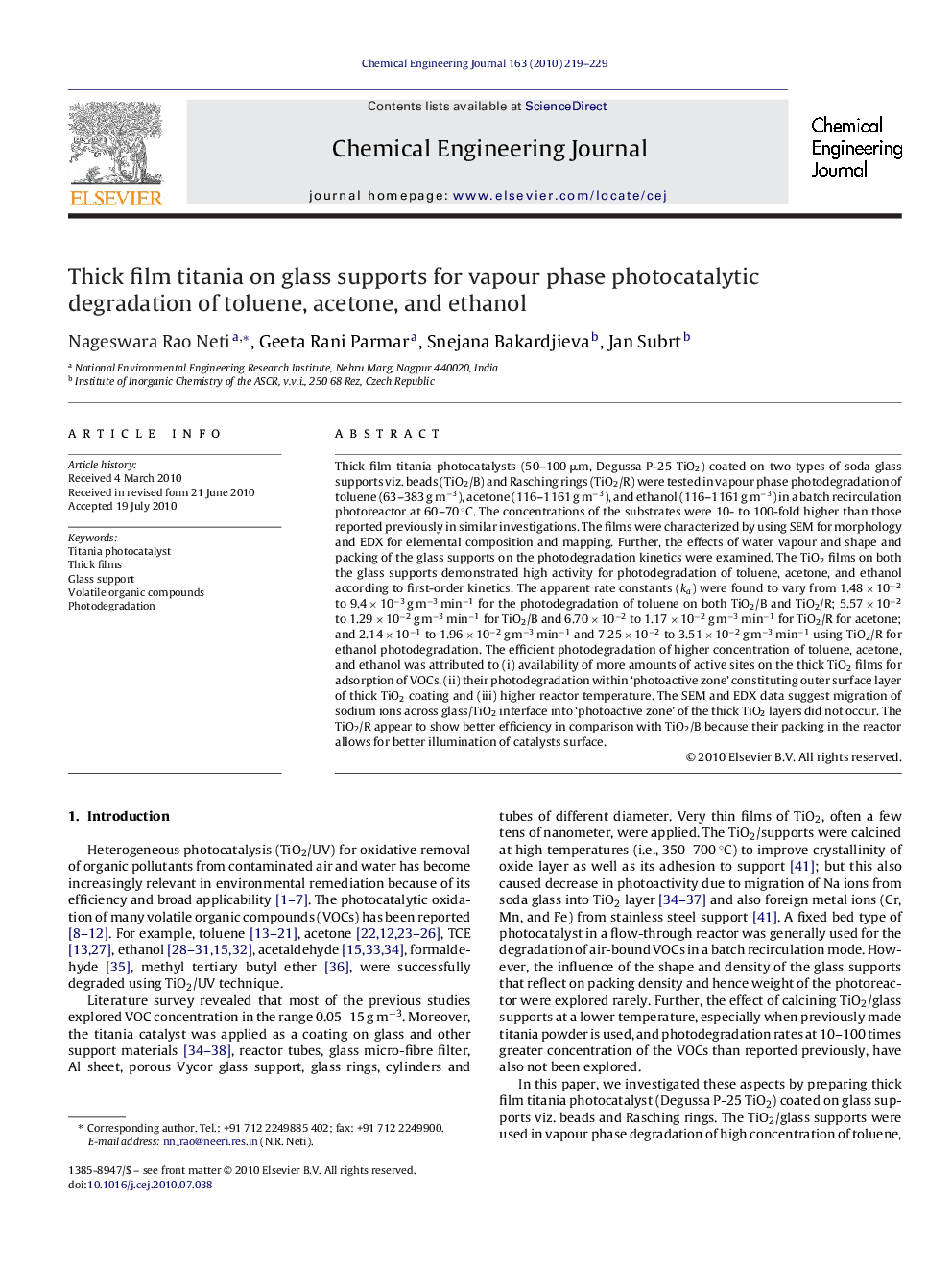| Article ID | Journal | Published Year | Pages | File Type |
|---|---|---|---|---|
| 151960 | Chemical Engineering Journal | 2010 | 11 Pages |
Thick film titania photocatalysts (50–100 μm, Degussa P-25 TiO2) coated on two types of soda glass supports viz. beads (TiO2/B) and Rasching rings (TiO2/R) were tested in vapour phase photodegradation of toluene (63–383 g m−3), acetone (116–1161 g m−3), and ethanol (116–1161 g m−3) in a batch recirculation photoreactor at 60–70 °C. The concentrations of the substrates were 10- to 100-fold higher than those reported previously in similar investigations. The films were characterized by using SEM for morphology and EDX for elemental composition and mapping. Further, the effects of water vapour and shape and packing of the glass supports on the photodegradation kinetics were examined. The TiO2 films on both the glass supports demonstrated high activity for photodegradation of toluene, acetone, and ethanol according to first-order kinetics. The apparent rate constants (ka) were found to vary from 1.48 × 10−2 to 9.4 × 10−3 g m−3 min−1 for the photodegradation of toluene on both TiO2/B and TiO2/R; 5.57 × 10−2 to 1.29 × 10−2 g m−3 min−1 for TiO2/B and 6.70 × 10−2 to 1.17 × 10−2 g m−3 min−1 for TiO2/R for acetone; and 2.14 × 10−1 to 1.96 × 10−2 g m−3 min−1 and 7.25 × 10−2 to 3.51 × 10−2 g m−3 min−1 using TiO2/R for ethanol photodegradation. The efficient photodegradation of higher concentration of toluene, acetone, and ethanol was attributed to (i) availability of more amounts of active sites on the thick TiO2 films for adsorption of VOCs, (ii) their photodegradation within ‘photoactive zone’ constituting outer surface layer of thick TiO2 coating and (iii) higher reactor temperature. The SEM and EDX data suggest migration of sodium ions across glass/TiO2 interface into ‘photoactive zone’ of the thick TiO2 layers did not occur. The TiO2/R appear to show better efficiency in comparison with TiO2/B because their packing in the reactor allows for better illumination of catalysts surface.
Graphical abstractThick film titania photocatalyst (50–100 μm, Degussa P-25 TiO2) coated soda glass supports efficiently photo degrades toluene, acetone, and ethanol which can be explained in terms of the existence of three different reaction zones under illumination namely (i) ‘photoactive zone’, which is the outer surface layer of TiO2 coating receiving UV illumination presumably <1.0 μm thick (ii) adsorption zone, which is bulk of TiO2 underneath the photoactive zone and, (iii) glass/TiO2 interface. The availability of more amount of active sites on the thick TiO2 films together with higher reaction temperature appear to be responsible for efficient photodegradation.Figure optionsDownload full-size imageDownload as PowerPoint slide
